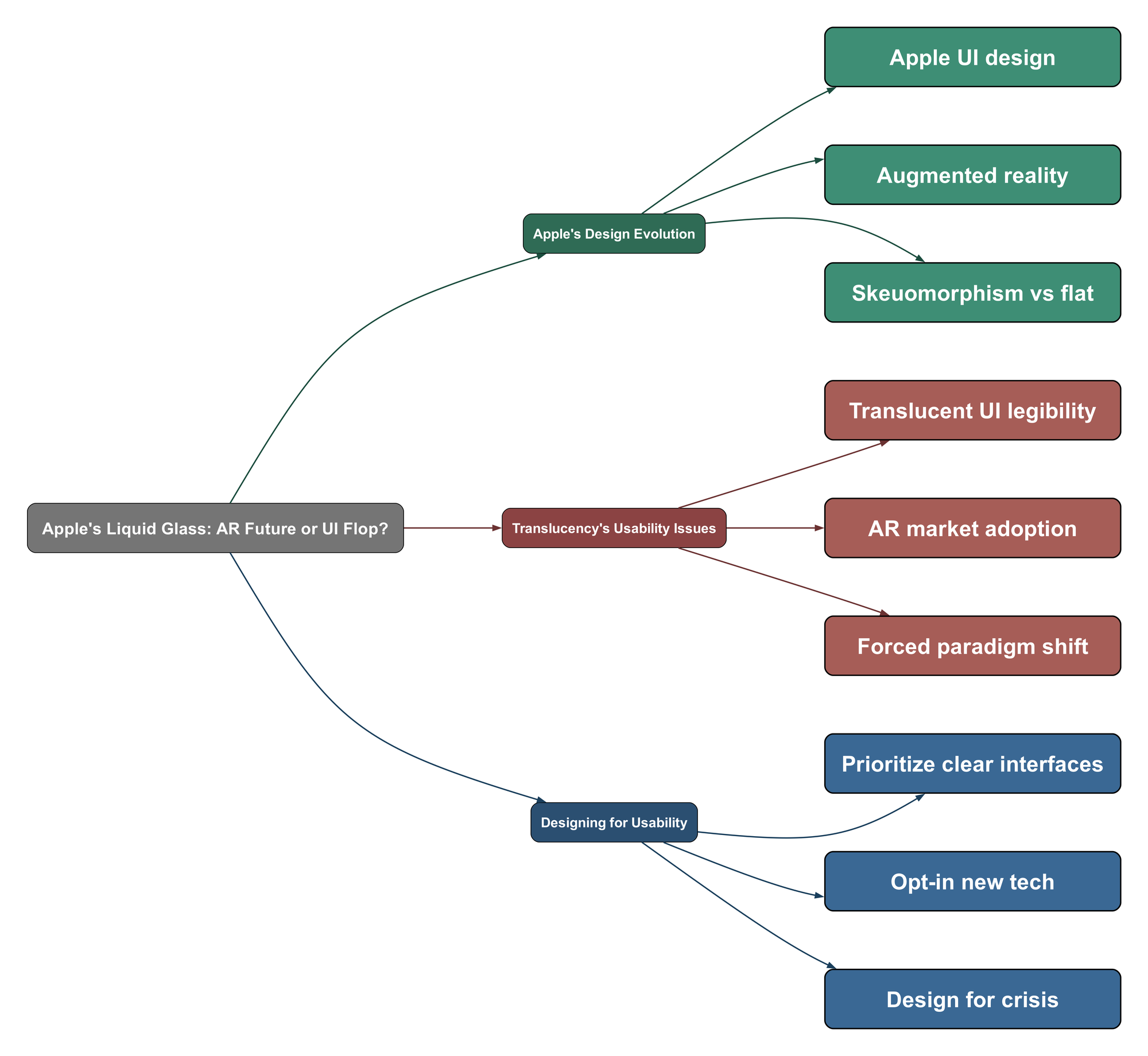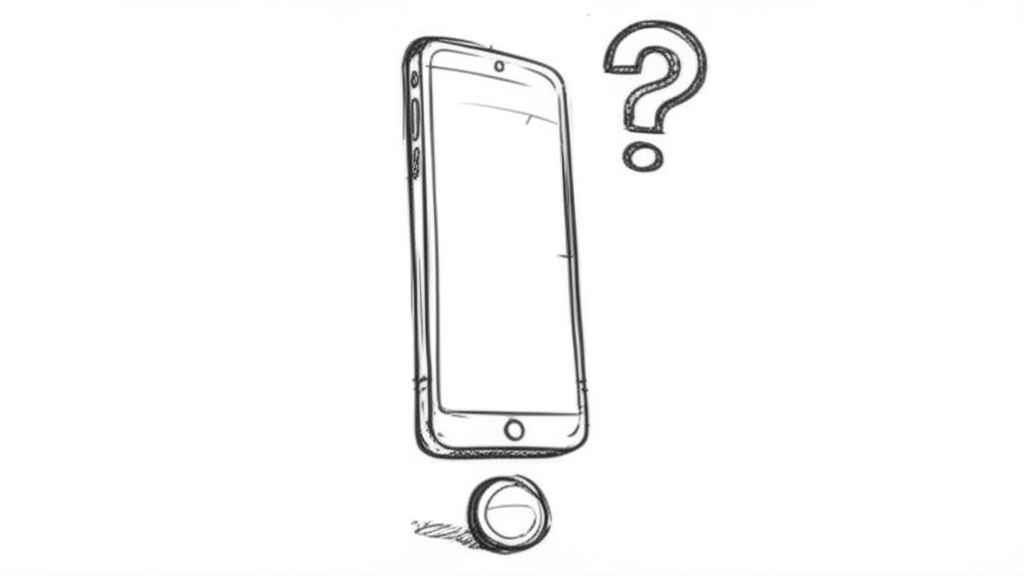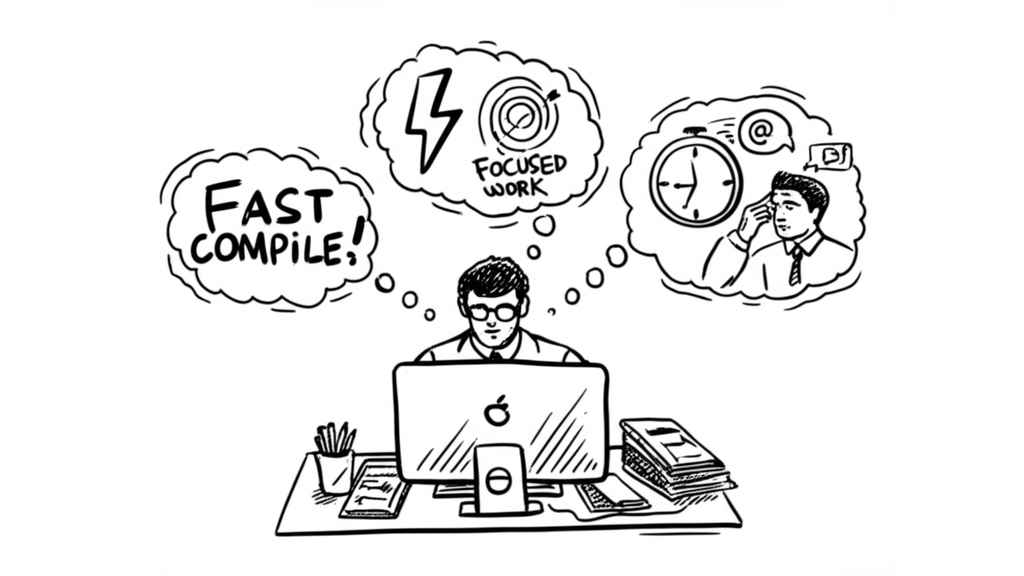Remember the great debate when iOS ditched skeuomorphism for flat design? Apple’s latest user interface refresh, dubbed “Liquid Glass,” is stirring up similar discussions. While some see it as a visionary step towards augmented reality, others are raising serious questions about its practicality and usability in the real world. Is this a strategic leap or a design misstep?
Apple’s Design Evolution
- Apple has consistently prioritized creating compelling user experiences through design and integration, often focusing on this strength rather than engaging in every industry trend, such as the current LLM arms race.
“Apple doubled down on what it does best: creating compelling user experiences through design and integration.”
- The new “Liquid Glass” UI is widely speculated to be a preparatory step for future augmented reality (AR) interfaces, aiming to make digital elements seamlessly coexist with the physical world.
- Historically, Apple’s shift from skeuomorphic design in iOS 6 to the minimalist flat design in iOS 7 sparked similar debates, yet within two years, flat design principles were widely adopted across the industry.
“The move from skeuomorphic design in iOS 6 to the stark minimalism of iOS 7 sparked similar debates about usability and aesthetic merit.”
- The technical rationale behind flat design was its ability to decouple the interface from specific screen sizes, allowing vector-based designs to scale efficiently across diverse devices. This strategy has allowed Apple to unpin itself from fixed pixel counts across its iPhone designs over the past decade.
“the technical reasoning for that [flat design] was it decoupled the interface from the screen. Flat designs were all vector, and could scale to any screen or interface size.”
Translucency’s Usability Issues
- Despite its aesthetic appeal, translucent UI is often considered a poor choice for critical or productivity-focused interfaces due to significant legibility issues, a lesson previously learned by designers of Windows and Mac operating systems.
“Translucent UI is usually a bad idea outside of movies and non-critical game interfaces… All of the same issues apply in AR as well.”
“Would you prefer a notebook of white sheets, or hundreds of different blurry image backgrounds?”
- Many experts argue that core applications like browsers, text editors, or video players would not benefit from translucency, as users require clear, unobstructed views for their tasks.
“This isn’t true. You’re never going to want your browser, editor, or Slack window to be translucent.”
- The concept of AR glasses gaining widespread adoption remains highly debatable, with many believing they will remain a niche product due to their intrusive nature and current technological limitations.
“People do not want invasive glasses, even if they make them as small at normal glasses. I just don’t see it becoming anything other than a niche product.”
- Implementing blurring effects in AR displays presents significant technical challenges, requiring precise image alignment and consuming substantial energy, which is a major constraint for power-limited AR glasses.
“if this is the reason for the UI change, they’ve fucked up hard. Blurring in AR is quite difficult as it requires an accurately aligned image to overlay the world.”
- Critics suggest that the “Liquid Glass” update might simply be a design “facelift” intended to fill a gap while Apple works on more substantial innovations, particularly in AI, rather than a genuine preparation for an imminent AR future.
Designing for Usability
- For optimal user experience, particularly in critical applications, prioritizing clear, tangible interfaces that ensure readability and ease of understanding over purely aesthetic translucency is crucial.
“the Skeuomorphic one looks absolutely best to me… The items look so much more tangible, and the text is more readable. Everything is easy to grok visually.”
- When introducing new technological paradigms like AI or AR, a gentle, opt-in approach is preferable to forcing widespread adoption, allowing enthusiasts to provide feedback before impacting general users who prioritize functionality.
“when a new paradigm comes whether it is AI or AR the bigtech companies always want to ram it down everybody’s throats rather than gentle opt-in.”
- User interfaces must be designed with real-life crisis scenarios in mind, ensuring that essential functions remain clear and accessible even under stressful conditions, regardless of aesthetic trends.
“normies who just want to get shit done and dont even know that you have keynotes or shareholders to impress and dont care about the translucency of your ‘glass’ when they’re trying to call 911”
- Many agree that the current “Liquid Glass” design needs significant adjustments and improvements before it can be effectively rolled out, especially if it is indeed intended for AR applications.
“liquid glass gets stuff wrong, and it’ll need to change before shipping.”
- The release of future hardware, such as Apple’s 20th anniversary iPhone in 2027, may provide clearer insights into the company’s long-term design and AR strategy.




